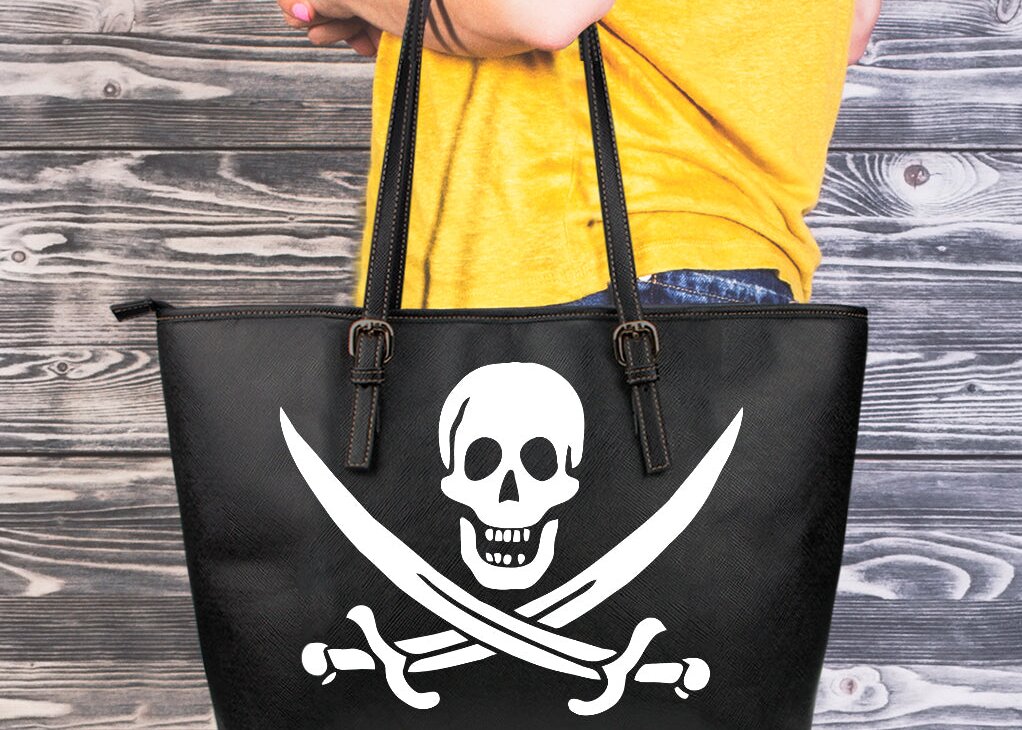In “Inside the Delirious Rise of ‘Superfake’ Handbags,” Amy X. Wang at the NYT reports on the fashion industry’s discomfiture over counterfeit luxury handbags that are indistinguishable from the real thing.
Not long ago, I found myself wandering through Paris with a fake Celine handbag slung over my shoulder. In France, a country that prides itself on originating so much of the world’s fashion, punishments for counterfeiting are severe, to the point that I technically risked three years in prison just by carrying my little knockoff around. But the bag’s fraudulence was undetectable to human eyes. I was toting around a delicious, maddening secret: Like a ship remade with identical wood, the bag on my arm had been built on the same plan, with seemingly the same gleaming materials, as the “original.” Yet it was considered inauthentic, a trick, a cheat….
This led me to a Reddit community of replica enthusiasts, who traded details about “trusted sellers” capable of delivering a Chanel 2.55 or Loewe Puzzle or Hermès Birkin that promised to be indistinguishable from the original, and priced at a mere 5 percent or so of the M.S.R.P….
…[I]n the past decade or so, a new breed of knockoff purses has come onto the scene from China — boasting shockingly good quality and slipping through customs gates like sand through a sieve. And, as many an angry resale buyer can attest, they’re able to fool even the most well-trained eye. “It’s a pervasive, tremendous problem,” Bob Barchiesi, president of the International Anti-Counterfeiting Coalition, told me. Hunter Thompson, who oversees the authentication process at the luxury consignment site the RealReal, elaborated: “It’s gotten to the point that you can see something in season replicated within that season.”
That doesn’t sound like a “tremendous problem” to me, Bob. Sounds more like a you problem.
In Guangzhou, where a vast majority of the world’s superfakes are thought to originate, experts have identified two main reasons behind the illicit goods’ lightning-fast new speeds: sophistication in bag-making technology and in the bag-makers themselves….
As for how the superfakes are achieving their unprecedented verisimilitude, …it’s simply a combination of skillful artisanship and high-quality raw materials. Some superfake manufacturers travel to Italy to source from the same leather markets that the brands do; others buy the real bags to examine every stitch.
In other words, based solely on the state of production technology, the bags should cost $200. The rest of that $10,000 consists entirely of unearned income from a state-conferred monopoly.
This is further confirmed by the likelihood, as one handbag authenticator suspects, that the counterfeits come from “someone who maybe works at Chanel or Hermès.” Gosh, you’d think someone working in a sweatshop would have a stronger sense of loyalty and respect for property rights. But it’s certainly interesting that the labor force engaged in producing “authentic” bags can produce identical knockoffs, using the same materials, production techniques, and machinery, sell them for one-fiftieth of the price — and come out ahead in the deal.
It’s almost like… intellectual property and branding are just gimmicks for corporations to charge markups of thousands of percent over actual production costs. Textbook example of economic rent extraction and unearned income.
An older generation still attaches some snob value to owning “the real thing” — or rather, to being seen as rich enough to afford “the real thing.” But a younger generation is over it.
That the profits of one idea’s relentless duplications funnel only into one (fat, corporate) pocket is precisely why many younger consumers see fake bags as better than the real thing. To them, counterfeit luxury — in a world already awash in lower-priced “dupes” of every kind, from eye shadows to electronics — is not an unethical scandal but a big, joyful open secret. Replica communities laugh at big luxury firms, taking on a subversive, stick-it-to-the-man attitude.
Bear in mind that the role of intellectual property is the same with virtually all manufactured goods, to a lesser extent. As “revolutionary” management theory guru and all-around ninny Tom Peters gushed back in the 90s, the majority of consumer electronics prices reflected not labor and materials cost but “intellect” — or, to be more honest, embedded monopoly rents. And in addition to these rents, intellectual property raises prices even more by incentivizing designs that deliberately thwart repair and recycling. If modular design with interchangeable generic parts weren’t criminalized, you could buy a durable laptop or phone that would last damn near forever, and just periodically upgrade the chip or replace a broken screen or keyboard. The same holds for cars, washing machines, etc., etc., which are designed to maximize the amount of stuff that has to be replaced if anything goes wrong, and to price gouge on the repair through proprietary, seller-specific parts. That’s not even getting to how everything is now computerized and runs on proprietary software — which is how John Deere steals from farmers. Or how drug companies literally murder people with the patent markups on insulin and other life-saving medicine — a problem that will hopefully be solved by DIY pirate biotech.
So kudos to counterfeiters and pirates everywhere! So-called “intellectual property rights” — nothing but a kind of landlordism for ideas — are the real theft, and the corporations that use them to extract rent are the real thieves.








